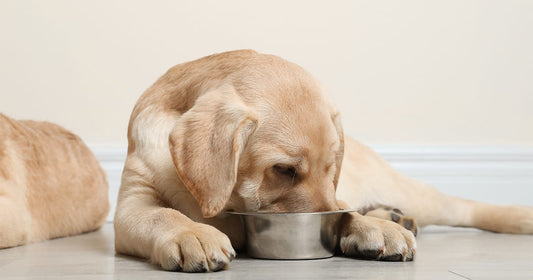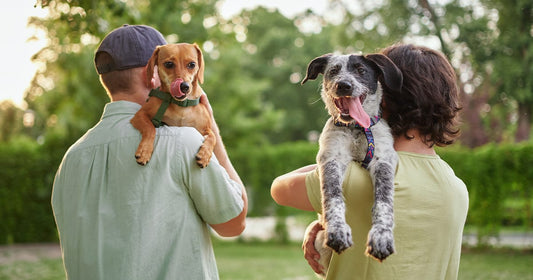Puppies have specific nutritional needs that are essential for them to develop into healthy, happy adult dogs. In this blog, brought to you by Native Dog Food, you will know the appropriate amount of high protein puppy food to feed your companion, along with the importance of a puppy feeding schedule.
Puppy Nutrition: How much should I feed my puppy?
Feeding a puppy the right amount of food is crucial for their growth and development. The most important factors that will influence portion size includes the puppy’s age and weight. The feeding guidelines below will help you determine the appropriate amount of Native Puppy to feed daily.


Although these feeding guidelines are a great resource, you should always monitor your puppy for signs of overfeeding or underfeeding and adjust according to the condition of your pet. Overfed puppies may exhibit excessive weight gain, lethargy or reluctance to play. Underfed puppies might show signs of stunted growth, low energy or a dull coat. Your regular veterinary check-ups should help ensure your puppy is on the right track.
As you feed your puppy, continue to monitor their weight and adjust their feeding regimen as needed to ensure they receive optimal nutrition tailored to their size. Puppies grow fast so it’s important to keep a close eye on their growth rate!
Puppy Feeding Schedule: How often to feed a puppy?
Puppies may start nibbling on food around four to five weeks of age. During this time, they can consume dry puppy food but moistening it may enhance acceptance. When feeding Native Puppy, you can start self-feeding anytime after weaning. If you choose to feed on a schedule instead, puppies generally need fed three times a day until they are six months old. After that, you can transition them to two times a day from six months to one year of age.
Additionally, establishing a consistent puppy feeding schedule can help regulate their digestion and prevent overeating. Although self-feeding can be easier at times, puppies thrive on routine and a puppy feeding schedule can help them adapt to their new home and surroundings. Feeding your puppy at the same times each day also establishes a predictable pattern that can make house training easier. Puppies tend to need to go to the bathroom after eating so you can anticipate when they need to go outside and help eliminate accidents. After doing this for a period of time, puppies will start linking mealtime with bathroom time.
As your puppy gets older and transitions to fewer meals a day, this should be done gradually. Slowly adjust the portion sizes while reducing the number of meals per day. This method will help prevent digestive upset and ensure your puppy adapts smoothly to their new feeding schedule.
When you choose the best puppy food, you give your puppy the best start in life. By following feeding guidelines, monitoring your puppy’s condition and adjusting their diet as needed you can help ensure they receive optimal nutrition. With the addition of a consistent puppy feeding schedule of high-quality puppy food, you can also support digestion, energy levels and overall well-being. Learn more about active puppies in other Native resources.




